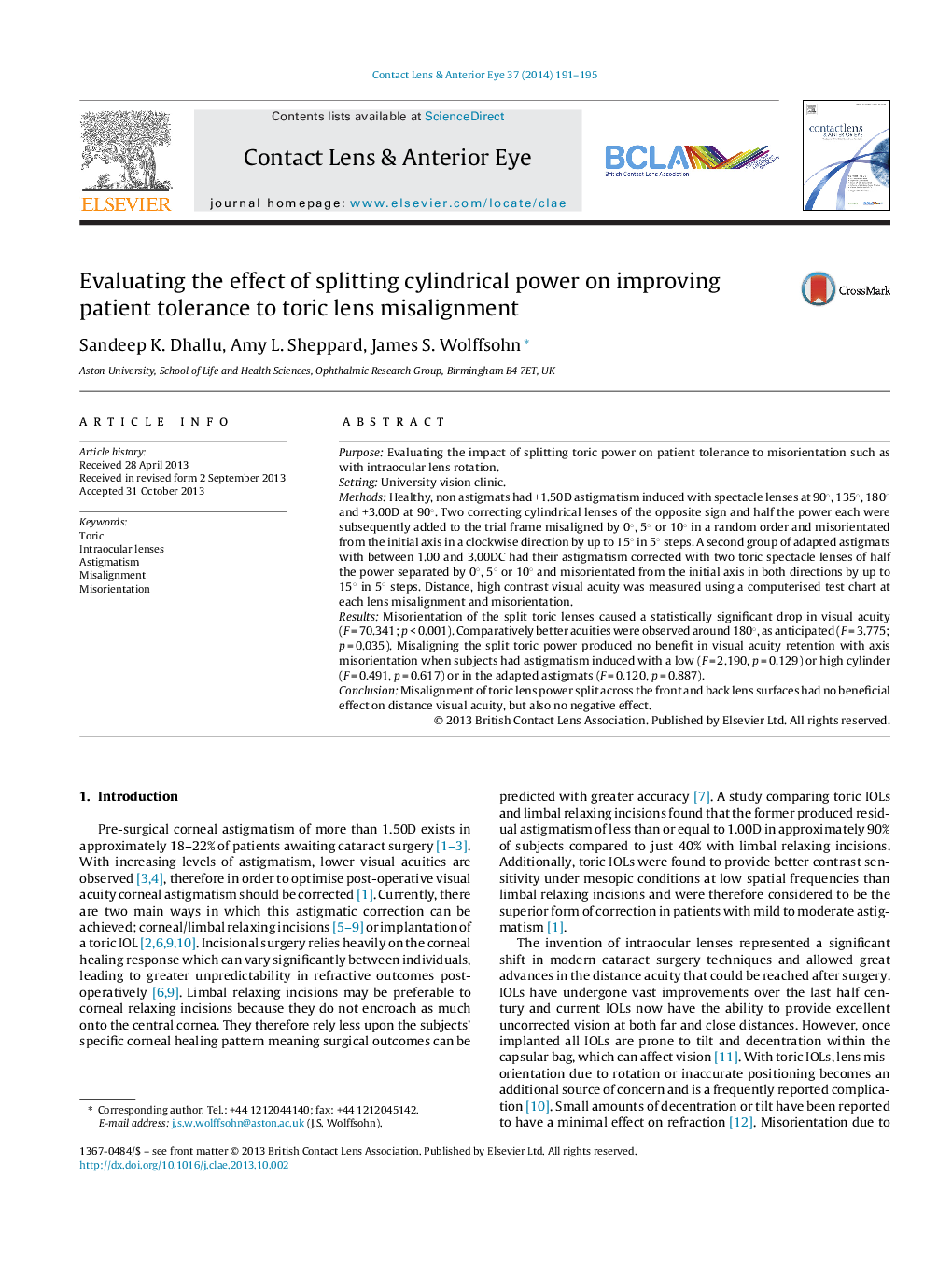| Article ID | Journal | Published Year | Pages | File Type |
|---|---|---|---|---|
| 2693101 | Contact Lens and Anterior Eye | 2014 | 5 Pages |
PurposeEvaluating the impact of splitting toric power on patient tolerance to misorientation such as with intraocular lens rotation.SettingUniversity vision clinic.MethodsHealthy, non astigmats had +1.50D astigmatism induced with spectacle lenses at 90°, 135°, 180° and +3.00D at 90°. Two correcting cylindrical lenses of the opposite sign and half the power each were subsequently added to the trial frame misaligned by 0°, 5° or 10° in a random order and misorientated from the initial axis in a clockwise direction by up to 15° in 5° steps. A second group of adapted astigmats with between 1.00 and 3.00DC had their astigmatism corrected with two toric spectacle lenses of half the power separated by 0°, 5° or 10° and misorientated from the initial axis in both directions by up to 15° in 5° steps. Distance, high contrast visual acuity was measured using a computerised test chart at each lens misalignment and misorientation.ResultsMisorientation of the split toric lenses caused a statistically significant drop in visual acuity (F = 70.341; p < 0.001). Comparatively better acuities were observed around 180°, as anticipated (F = 3.775; p = 0.035). Misaligning the split toric power produced no benefit in visual acuity retention with axis misorientation when subjects had astigmatism induced with a low (F = 2.190, p = 0.129) or high cylinder (F = 0.491, p = 0.617) or in the adapted astigmats (F = 0.120, p = 0.887).ConclusionMisalignment of toric lens power split across the front and back lens surfaces had no beneficial effect on distance visual acuity, but also no negative effect.
